Optimizing the Influence of Fly Ash as an Anti-Sagging Additive in Highly Deviated Geothermal Well Drilling Fluids Using Surface Response Method
Abstract
:1. Introduction
2. Materials and Methods
2.1. Materials
2.2. Preparation of Drilling Fluid Samples
2.3. Sag Behavior
3. Results
3.1. Sag Test
3.2. Optimization
3.3. Validation of Experiments
4. Conclusions
- The fluid sample formulated without fly ash was discovered to exhibit a higher SF and VSST above the acceptable API recommended value of 0.530 and 1 ppg, respectively. The addition of 4 lb/bbl of fly ash in the barite-densified fluid was effective in reducing the SF and VSST by 3.4% and 63.9%, respectively. However, it was slightly less effective in the ilmenite-densified drilling fluid by reducing the SF and VSST by 2.4% and 63.1%, respectively, which was earlier reported in [3].
- The static and dynamic anti-sagging properties of fly ash were more potent in barite-densified drilling fluid than in ilmenite-densified drilling fluid for all temperatures, angles of inclination, and concentrations (3 and 4 lb/bbl) of fly ash investigated.
- It was unveiled from the elemental composition, as revealed by the XRF analysis result of ilmenite, that it predominantly contains 54.72% iron (Fe), which may be responsible for its higher density as compared with barite, which was made up of 77.5% barium, a less dense element. The D50 PSD of ilmenite (22 µm) is larger than that of barite (6.5 µm); the larger particle size of ilmenite, in addition to its density, may be responsible for faster sagging of ilmenite, and thus less potency of fly ash in ilmenite-densified fluid.
- An increase in the quantity of fly ash added to the barite-densified fluid caused a corresponding increase in the critical angle; 0, 3, and 4 lb/bbl of fly ash resulted in critical angles of 62°, 63°, and 65°, respectively.
- Optimization of the variables through the 3D surface response plots shows an inverse relationship between the ratio of fly ash and temperature. Increasing the ratio of fly ash and decreasing the temperature improves the SF of the WBF.
- The contour plots of 45°, 60°, and 70° well deviations show that a high quantity of fly ash ratio may be required to mitigate sagging due to the observed fewer interactions between the variables (fly ash and temperature at wellbore angles), which resulted in fewer slope contour lines. However, this further validates the huge sagging challenges encountered at these well inclinations.
Author Contributions
Funding
Data Availability Statement
Acknowledgments
Conflicts of Interest
References
- Bern, P.A.; Zamora, M.; Slater, K.S.; Hearn, P.J. The Influence of Drilling Variables on Barite Sag. In All Days; SPE: Denver, CO, USA, 1996; p. SPE-36670-MS. [Google Scholar] [CrossRef]
- Ofei, T.N.; Lund, B.; Saasen, A.; Sangesland, S.; Linga, H.; Gyland, K.R.; Kawaji, M. Barite Sag Measurements. In Day 2 Wed, March 04, 2020; SPE: Galveston, TX, USA, 2020; p. D092S000R004. [Google Scholar] [CrossRef]
- Jamison, D.; Clements, W. A New Test Method to Characterize Setting/Sag Tendencies of Drilling Fluids in Extended Reach Drilling. Drill. Tech. Symp. 1990, 27, 109. [Google Scholar]
- Dye, W.; Hemphill, T.; Gusler, W.; Mullen, G. Correlation of Ultralow-Shear-Rate Viscosity and Dynamic Barite Sag. SPE Drill. Complet. 2001, 16, 27–34. [Google Scholar] [CrossRef]
- Basfar, S.; Mohamed, A.; Elkatatny, S. Barite–Micromax Mixture, an Enhanced Weighting Agent for the Elimination of Barite Sag in Invert Emulsion Drilling Fluids. J. Pet. Explor. Prod. Technol. 2020, 10, 2427–2435. [Google Scholar] [CrossRef]
- Ahmed, A.; Basfar, S.; Elkatatny, S.; Bageri, B. Vermiculite for Enhancement of Barite Stability in Water-Based Mud at Elevated Temperature. Powder Technol. 2022, 401, 117277. [Google Scholar] [CrossRef]
- Oni, O.; Fadairo, A.; Gosnold, W.; Egenhoff, S. Fly Ash as an Additive for Controlling Sagging Tendency in Ilmenite Densified Water-Based Mud for a Highly Inclined High Temperature Well. Geoenergy Sci. Eng. 2023, 230, 212232. [Google Scholar] [CrossRef]
- Xu, P.; Xu, M.; Tao, Z.; Wang, Z.; Huang, T. Rheological Properties and Damage-Control Mechanism of Oil-Based Drilling Fluid with Different Types of Weighting Agents. R. Soc. Open Sci. 2018, 5, 180358. [Google Scholar] [CrossRef] [PubMed]
- Oni, O.; Fadairo, A.S.; Gosnold, W.; Egenhoff, S.; Adeyemi, G.; Ling, K. Investigating the Suitability of North Dakota Fly Ash as Fluid Loss Reducing Additive in Densified Water-Based Drilling Fluid. Powder Technol. 2023, 430, 118972. [Google Scholar] [CrossRef]
- Wang, W.; Li, C.; Zhao, X.; Song, P.; Li, J.; Zheng, J.; Wang, X. An Image-based method for evaluating changes in particle size and morphology distributions of aggregate materials after vibratory compaction test. Constr. Build. Mat. 2024, 430, 136483. [Google Scholar] [CrossRef]
- Longarini, N.; Crespi, P.; Zucca, M.; Giordano, N.; Silvestro, G. The advantages of fly ash use in concrete structures. Inżynieria Miner. 2014, 15, 141–145. [Google Scholar]
- AlAbdullatif, Z.; Al-Yami, A.; Wagle, V.; Bubshait, A.; Al-Safran, A. Development of New Kill Fluids with Minimum Sagging Problems for High Pressure Jilh Formation in Saudi Arabia. In Day 3 Wed, November 12, 2014; SPE: Abu Dhabi, UAE, 2014; p. D031S057R002. [Google Scholar] [CrossRef]
- Mohamed, A.; Al-Afnan, S.; Elkatatny, S.; Hussein, I. Prevention of Barite Sag in Water-Based Drilling Fluids by A Urea-Based Additive for Drilling Deep Formations. Sustainability 2020, 12, 2719. [Google Scholar] [CrossRef]
- Ren, Z.; Liu, Y.; Yuan, L.; Luan, C.; Wang, J.; Cheng, X.; Zhou, Z. Optimizing the content of nano-SiO2, nano-TiO2 and nano-CaCO3 in Portland cement paste by response surface methodology. J. Build. Eng. 2021, 35, 102073. [Google Scholar] [CrossRef]
- Derdour, F.Z.; Kezzar, M.; Khochemane, L. Optimization of Penetration Rate in Rotary Percussive Drilling Using Two Techniques: Taguchi Analysis and Response Surface Methodology (RMS). Powder Technol. 2018, 339, 846–853. [Google Scholar] [CrossRef]
- Ebrahimzade, I.; Ebrahimi-Nik, M.; Rohani, A.; Tedesco, S. Higher Energy Conversion Efficiency in Anaerobic Degradation of Bioplastic by Response Surface Methodology. J. Clean. Prod. 2021, 290, 125840. [Google Scholar] [CrossRef]

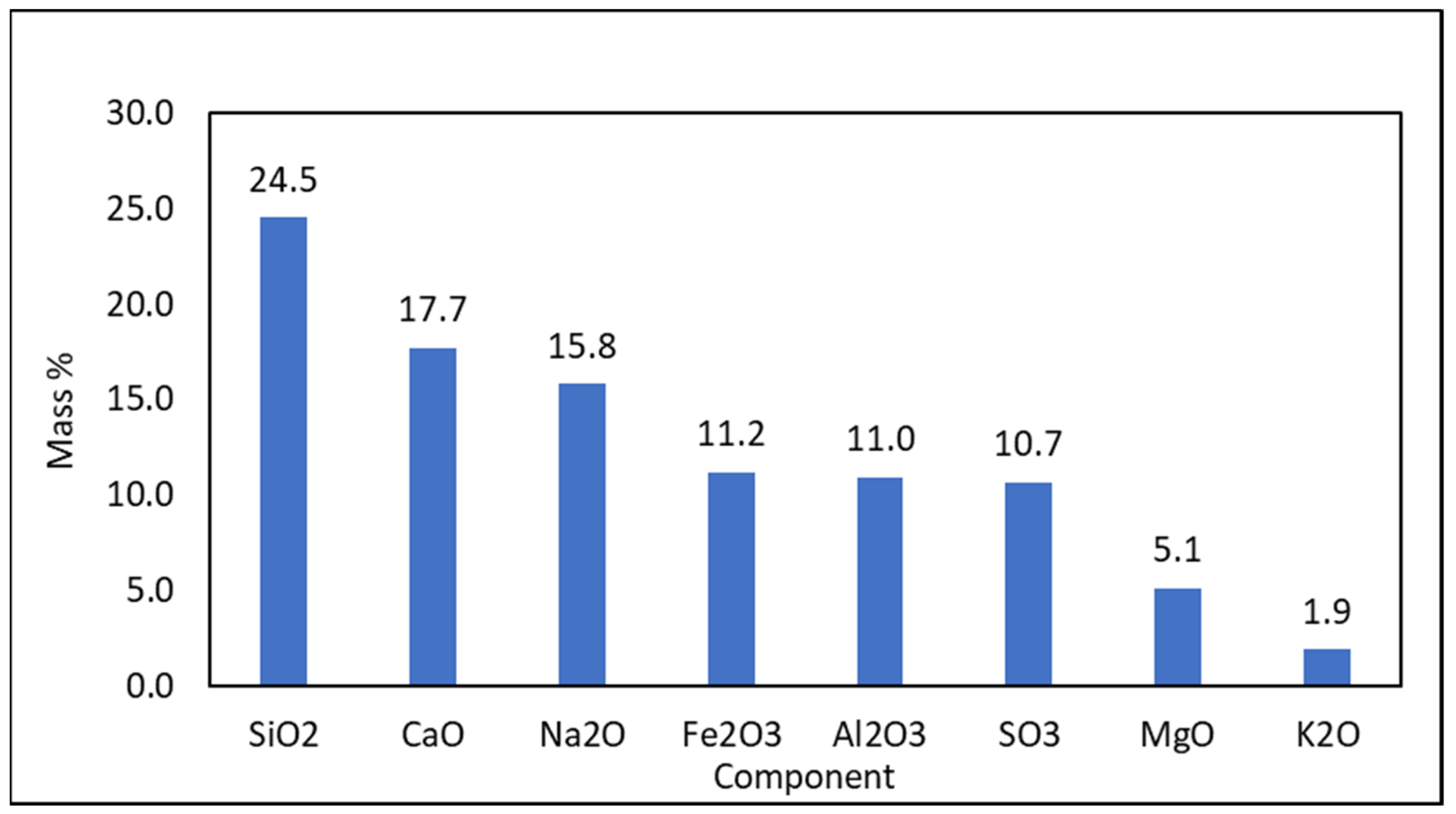

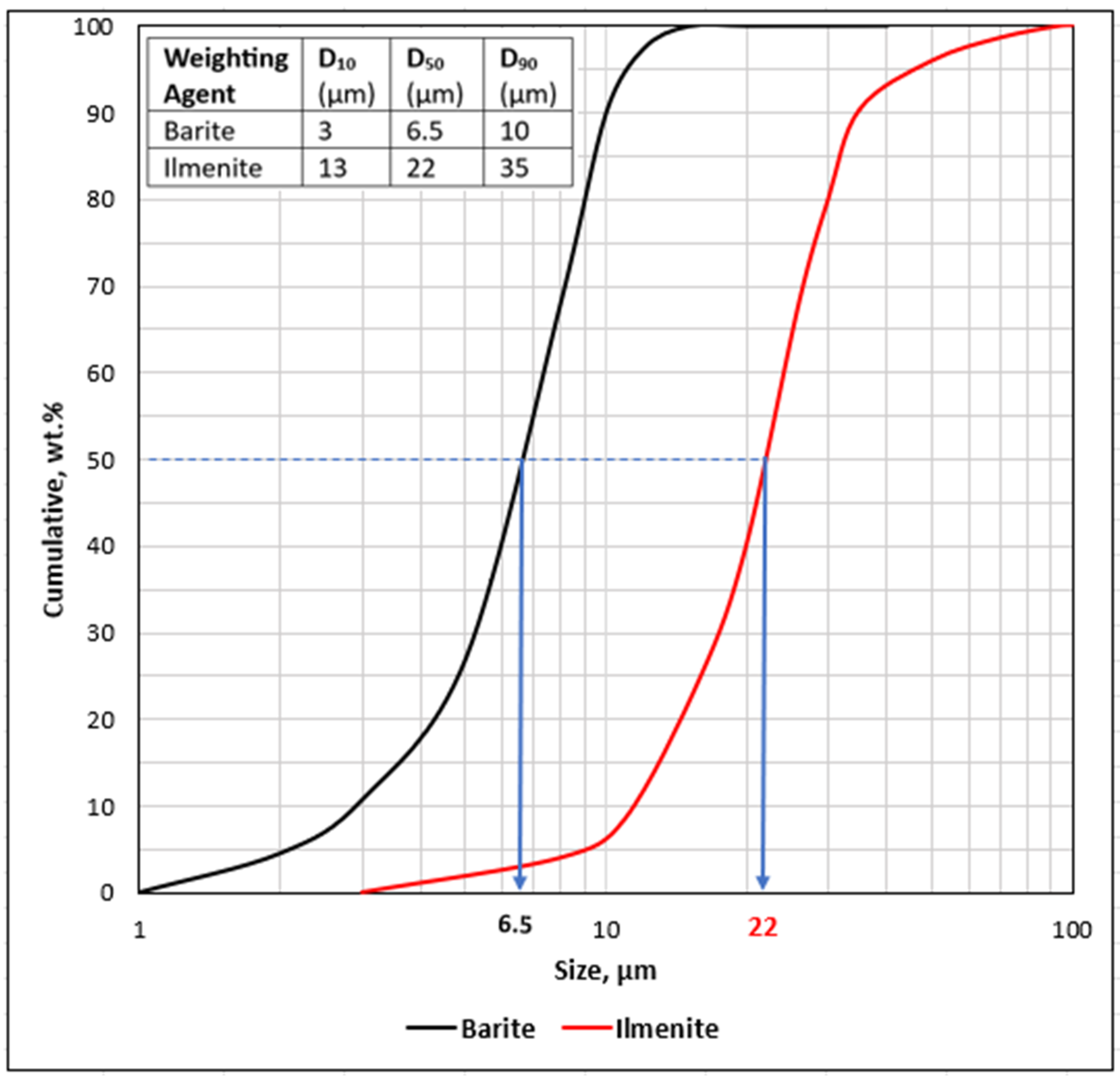
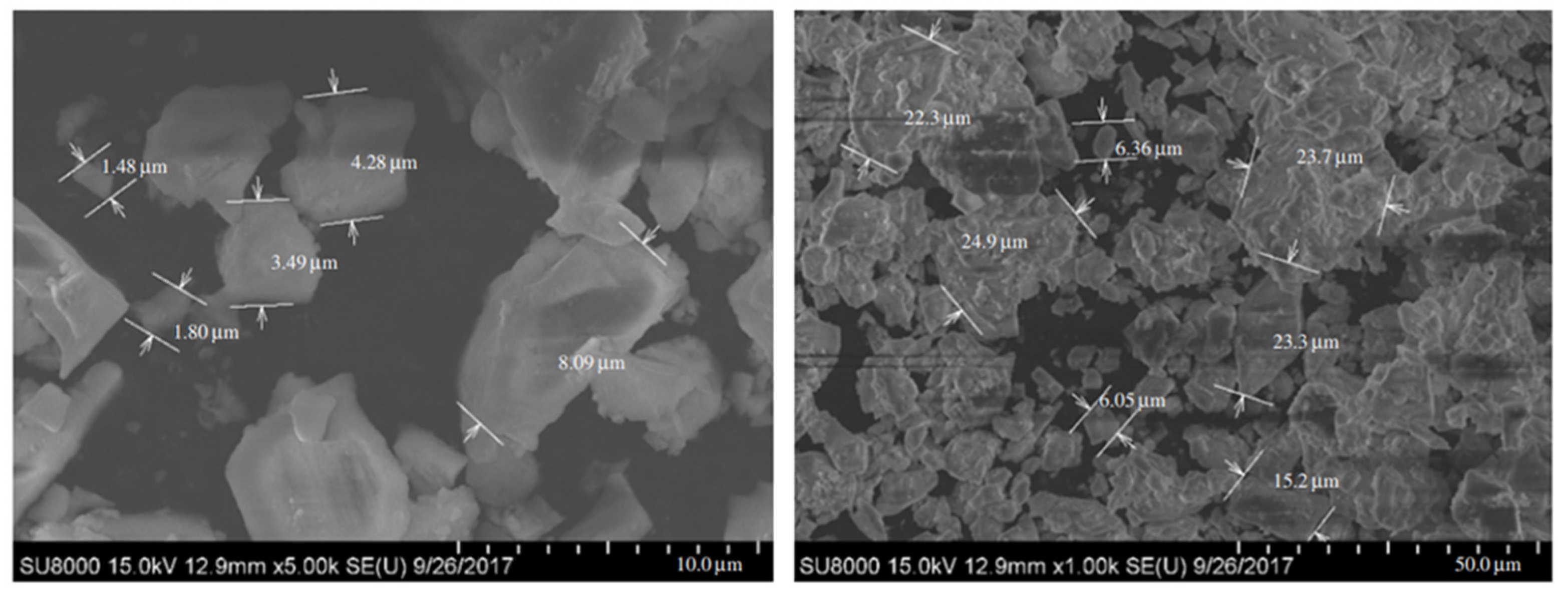
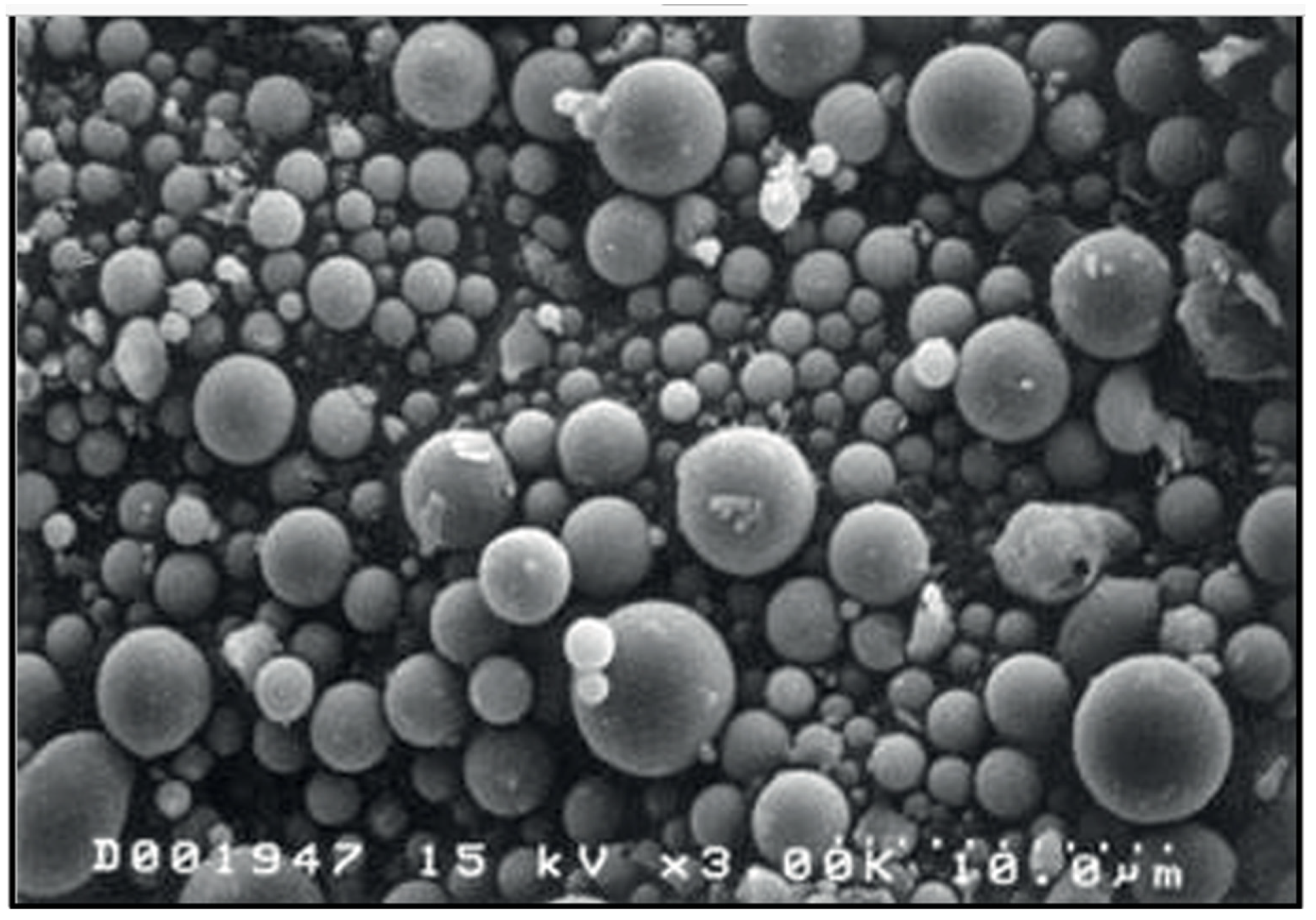
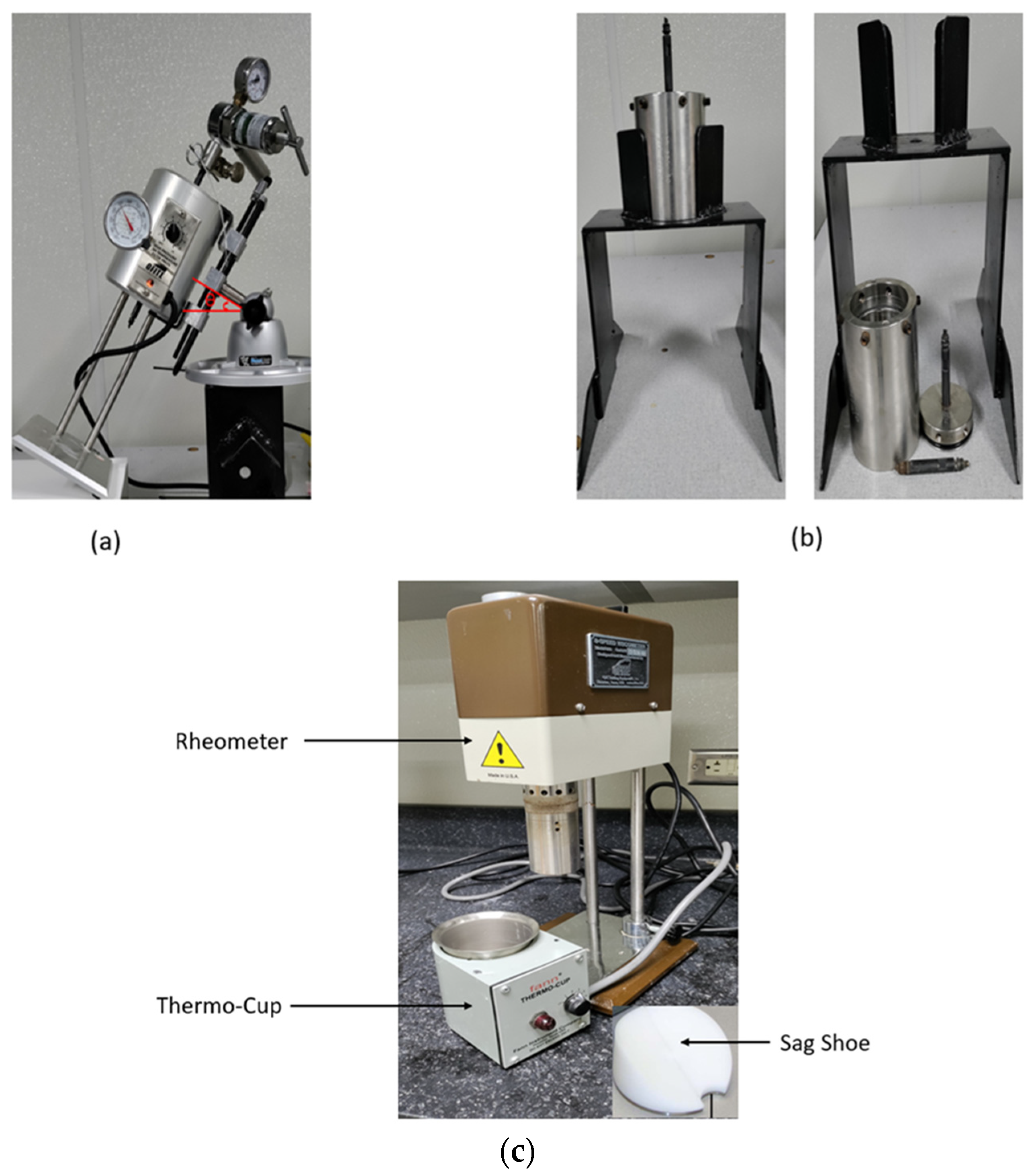

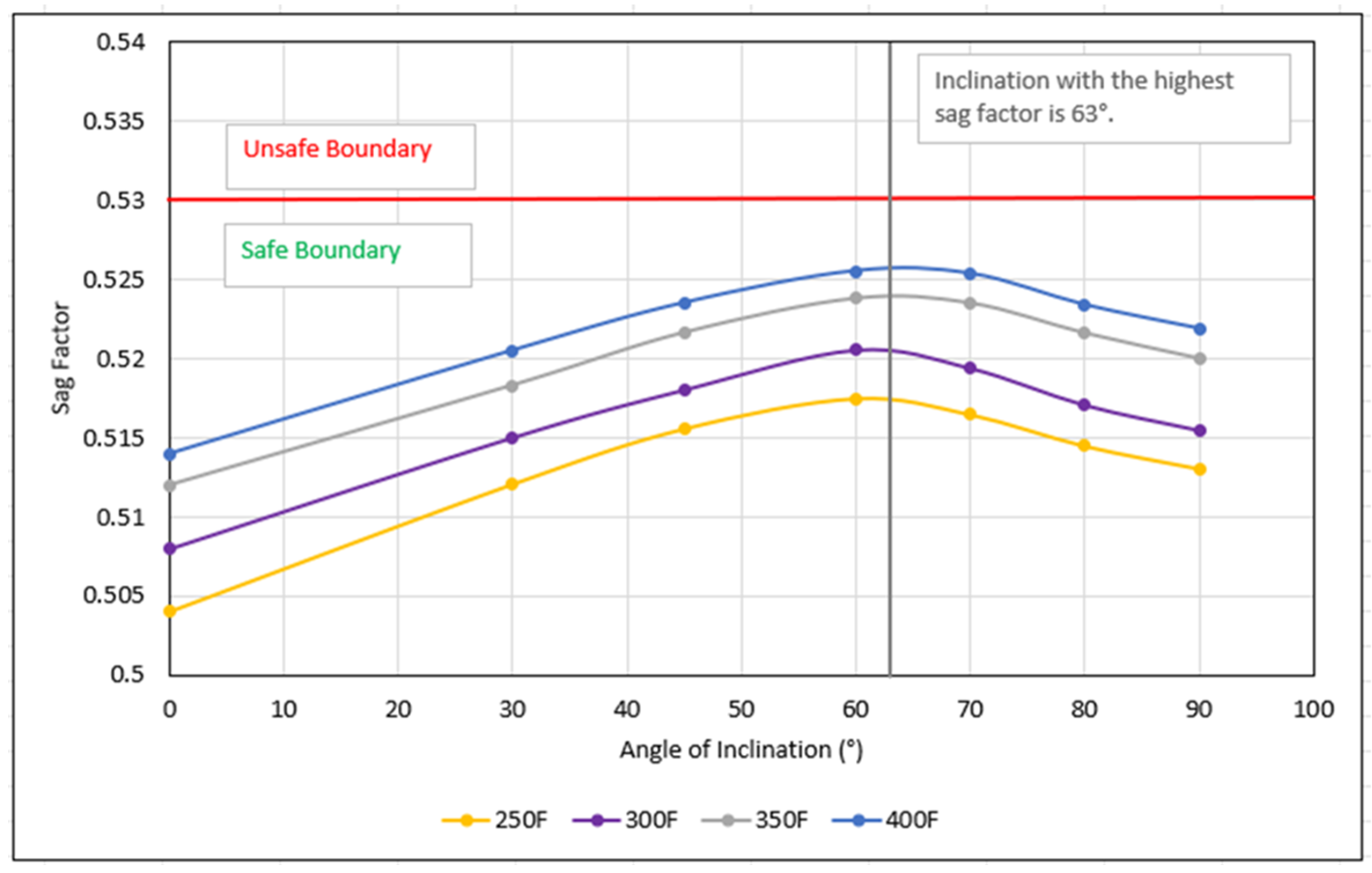
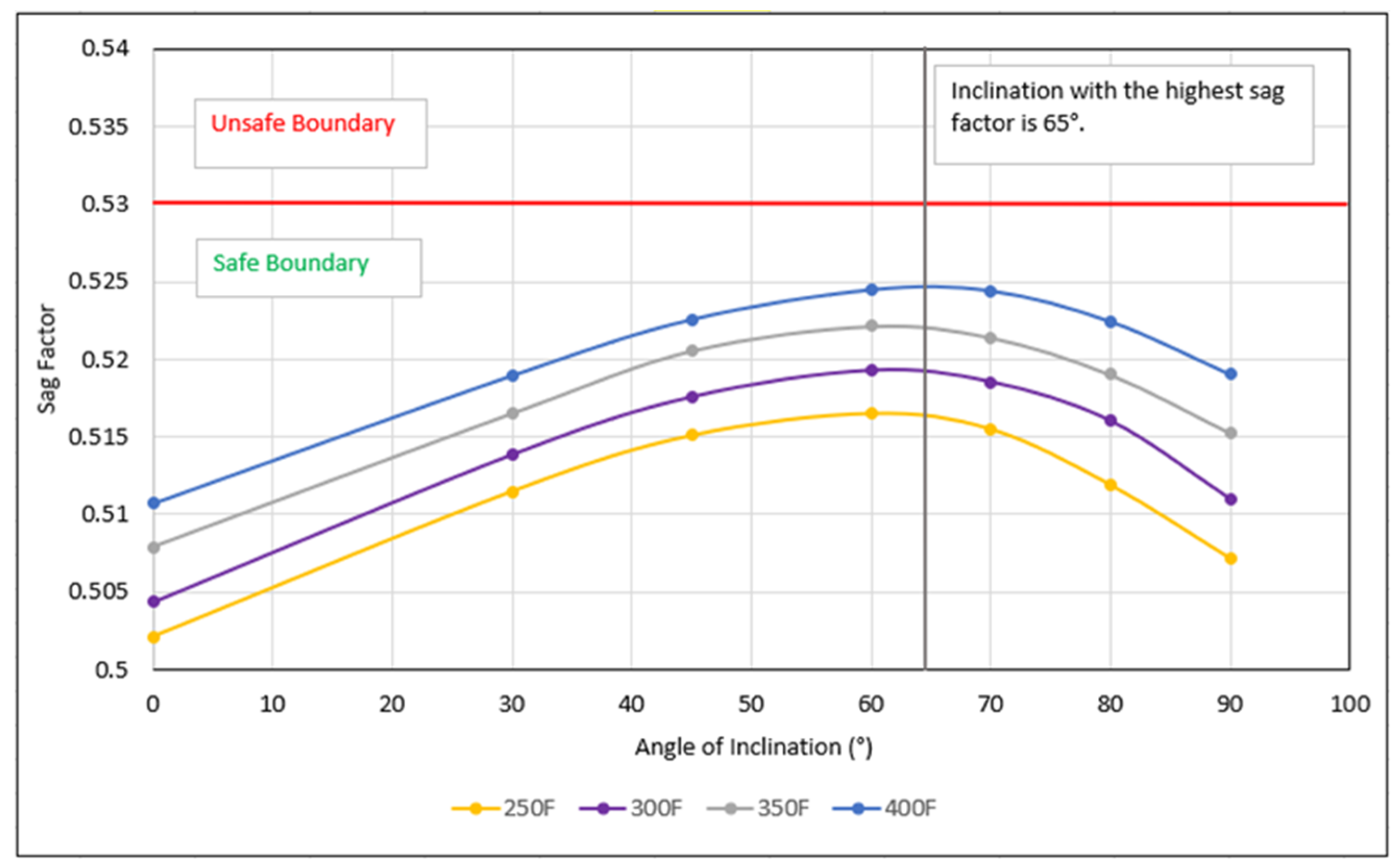
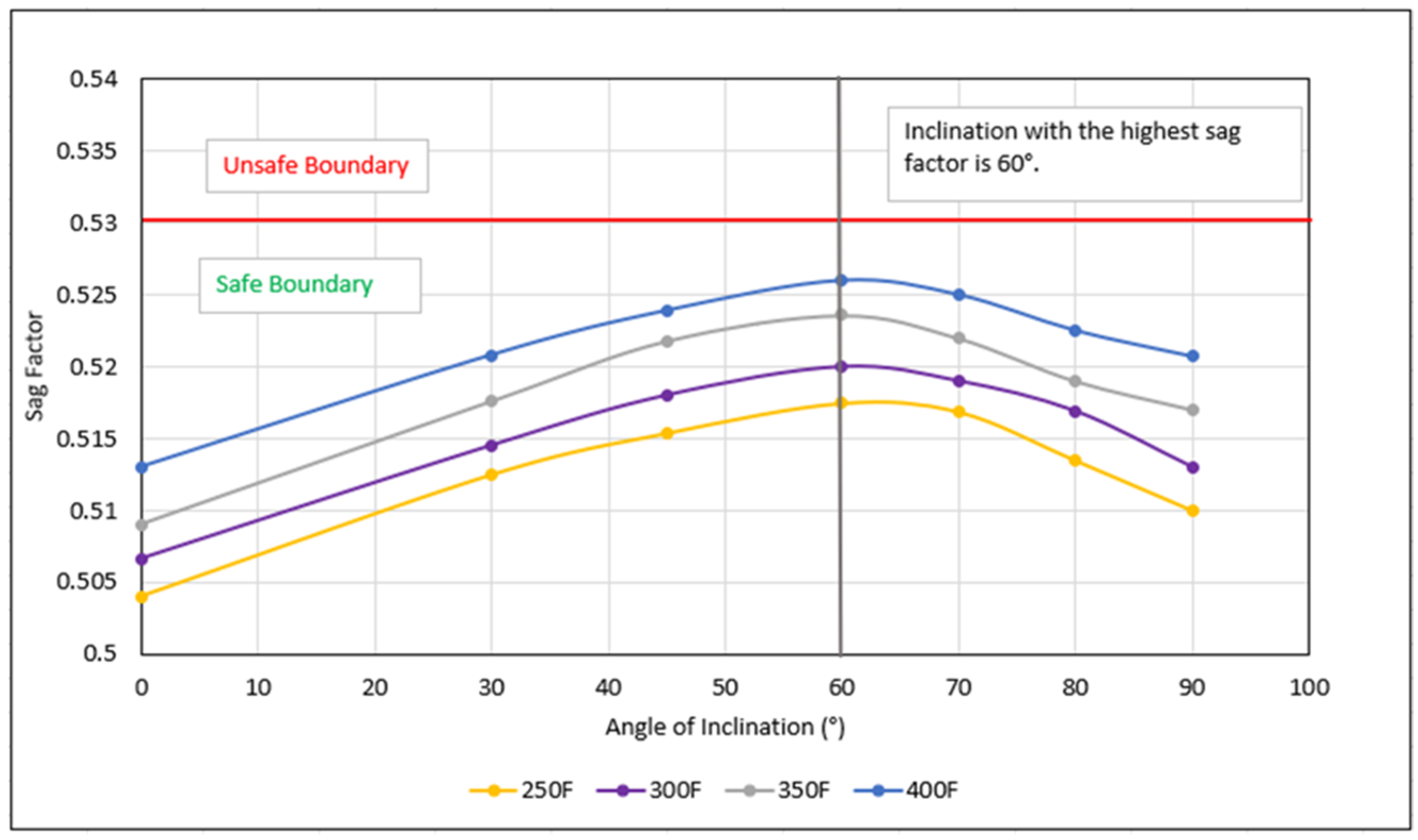
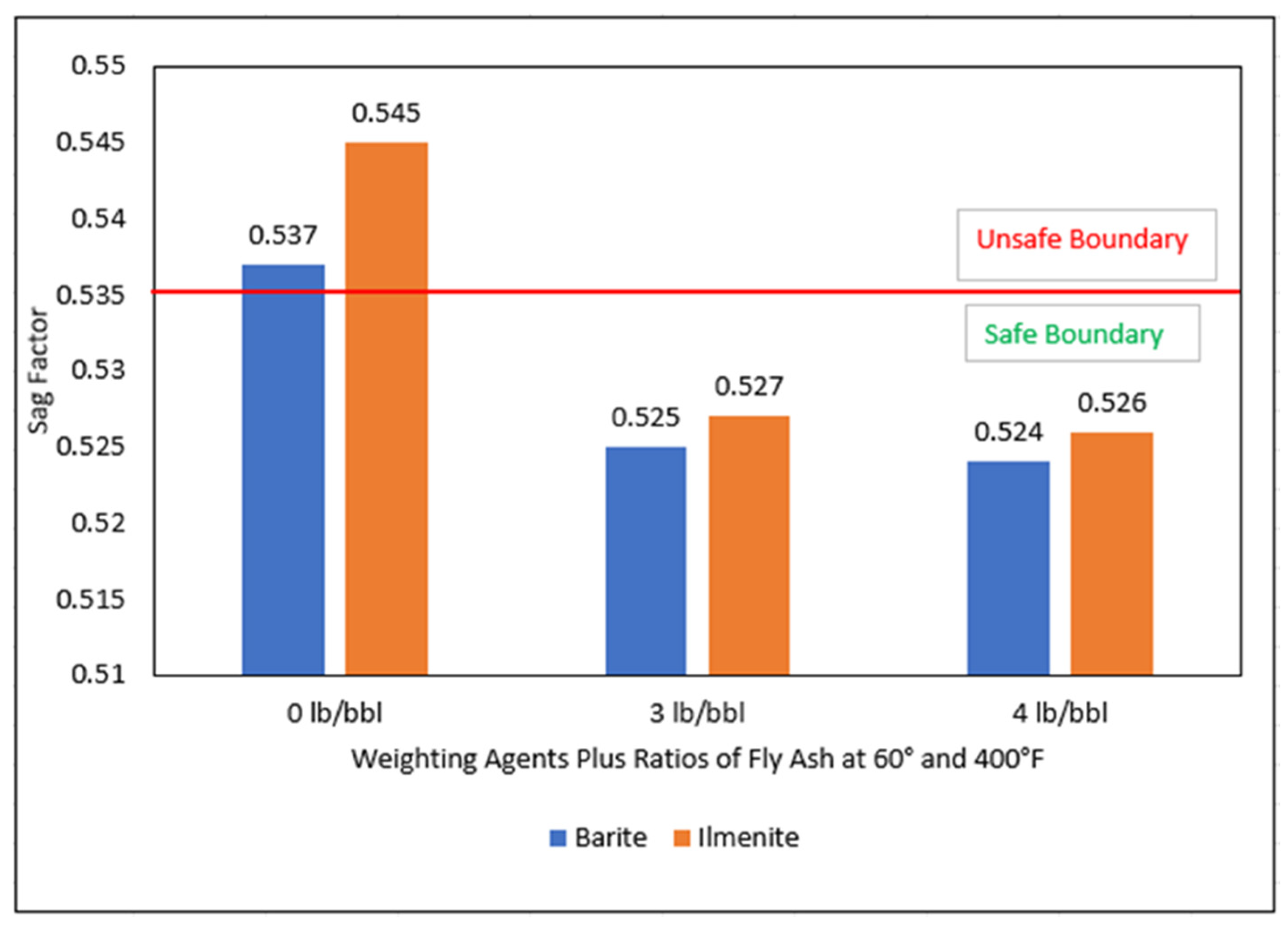
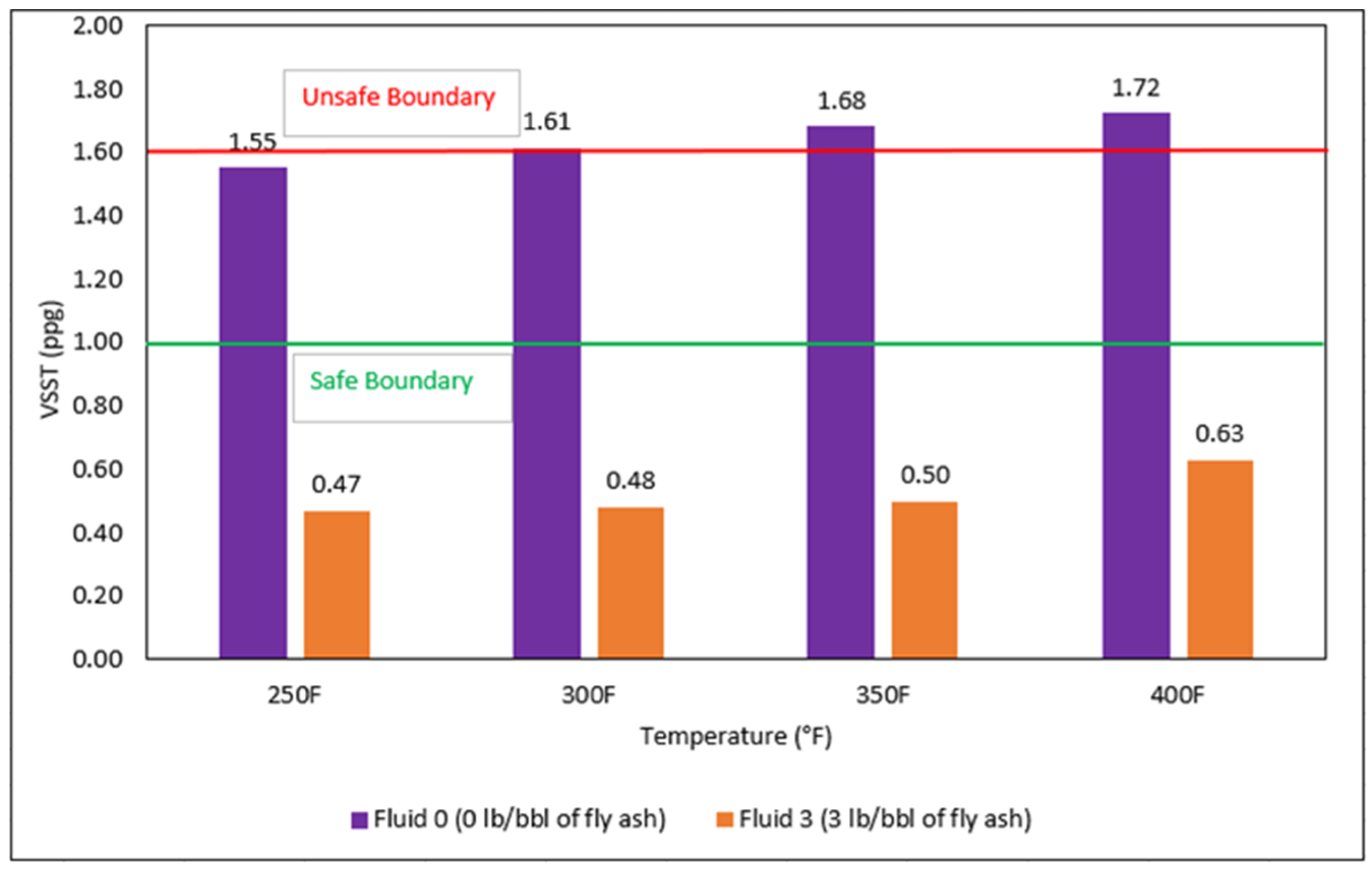



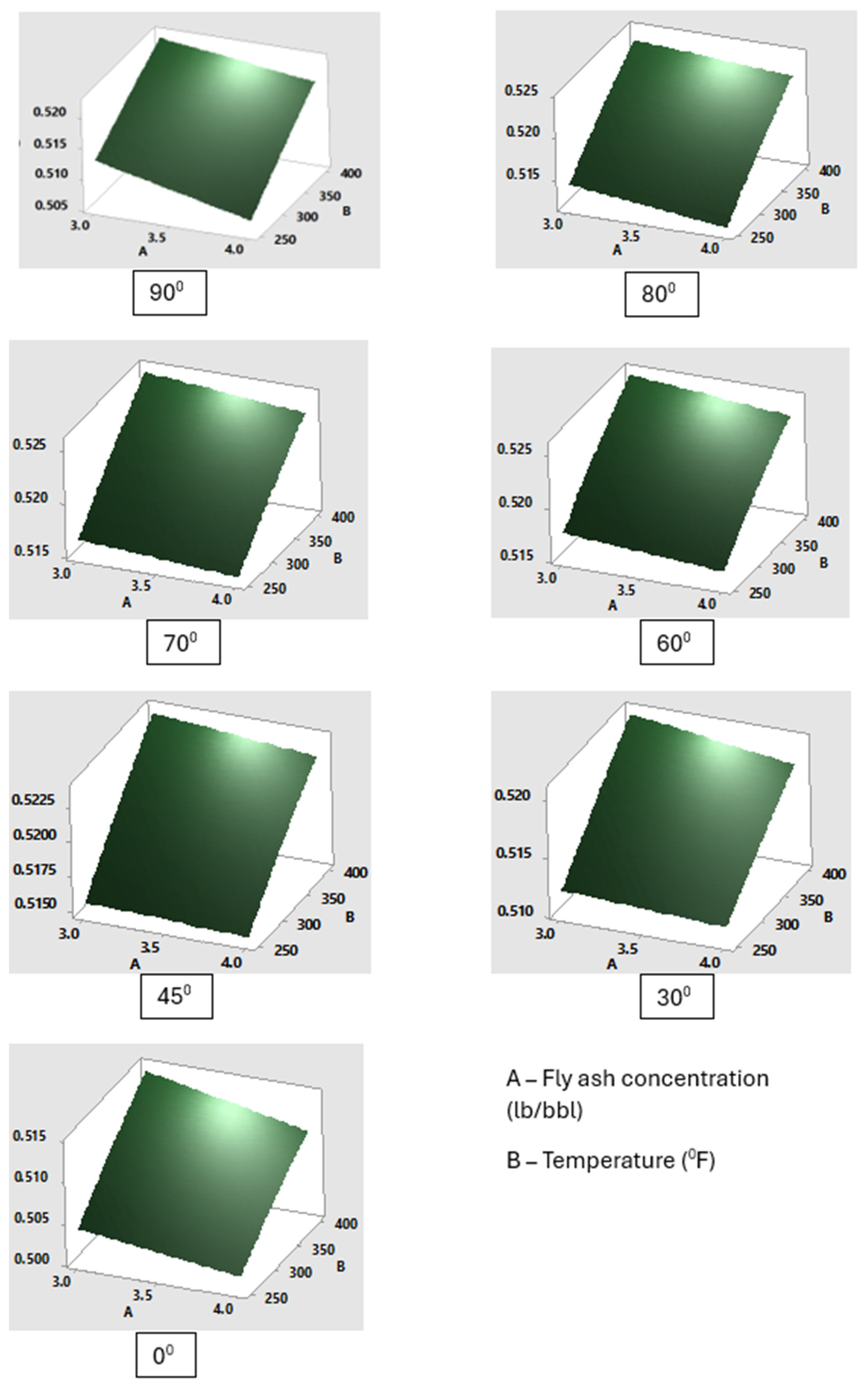

| Based Fluid | Fluid 1 | Fluid 2 | Fluid 3 | Fluid 4 | Fluid 5 | Function | Unit | |
|---|---|---|---|---|---|---|---|---|
| Water | 0.7 | 0.7 | 0.7 | 0.7 | 0.7 | 0.7 | Based fluid | bbl |
| PAC-R | 1 | 1 | 1 | 1 | 1 | 1 | Fluid loss regulator | lb |
| Soda ash | 0.5 | 0.5 | 0.5 | 0.5 | 0.5 | 0.5 | Calcium controller | lb |
| KCL | 20 | 20 | 20 | 20 | 20 | 20 | The shale stabilizer | lb |
| CaCO3 | 5 | 5 | 5 | 5 | 5 | 5 | Bridging additive | lb |
| Defoamer | 0.08 | 0.08 | 0.08 | 0.08 | 0.08 | 0.08 | Foam fighting agent | lb |
| Corn starch | 6 | 6 | 6 | 6 | 6 | 6 | Fluid loss regulator | lb |
| Xanthan gum | 0.5 | 0.5 | 0.5 | 0.5 | 0.5 | 0.5 | Viscosity regulator | lb |
| KOH | 0.5 | 0.5 | 0.5 | 0.5 | 0.5 | 0.5 | Alkalinity regulator | lb |
| Industrial copolymer | 1 | 1 | 1 | 1 | 1 | 1 | Copolymer | lb |
| Bentonite | 4 | 4 | 4 | 4 | 4 | 4 | Viscosity regulator | lb |
| Barite | 350 | 350 | 350 | 350 | 350 | 0 | Weighting agent | lb |
| Ilmenite | 0 | 0 | 0 | 0 | 0 | 350 | Weighting agent | lb |
| Fly ash | 0 | 1 | 2 | 3 | 4 | 4 | Fluid loss regulator | lb |
| Parameters | This Study | [6] | ||
|---|---|---|---|---|
| Anti-sagging additive | Fly ash | Fly ash | Vermiculite | |
| Weighting agent | Barite | Ilmenite | Barite | |
| The ratio of anti-sagging additive (lb/bbl) | 4 | 4 | 4 | |
| Temperature (°F) | 250 | 250 | 250 | |
| Pressure (psi) | 500 | 500 | 300 | |
| Particle size distribution (D50) (μm) | 6.5 | 22 | 21.64 | |
| Sag factor | 00 | 0.5021 | 0.5040 | 0.5100 |
| 450 | 0.5151 | 0.5154 | 0.5200 | |
| Variable | Symbol | Unit | Level | |
|---|---|---|---|---|
| Low | High | |||
| Concentration of fly ash | C | lb/bbl | 3 | 4 |
| Temperature | T | °F | 250 | 400 |
| Run Order | Fly Ash Ratio (lb/bbl) | Temperature °F | Wellbore Inclinations | ||||||
|---|---|---|---|---|---|---|---|---|---|
| C | T | 0° | 30° | 45° | 60° | 70° | 80° | 90° | |
| 1 | 3 | 250 | 0.504000 | 0.512067 | 0.515575 | 0.517493 | 0.516482 | 0.514489 | 0.513049 |
| 2 | 3 | 300 | 0.508000 | 0.515019 | 0.518029 | 0.520547 | 0.519404 | 0.517081 | 0.515487 |
| 3 | 3 | 350 | 0.512000 | 0.518310 | 0.521637 | 0.523796 | 0.523496 | 0.521602 | 0.520002 |
| 4 | 3 | 400 | 0.514000 | 0.520514 | 0.523520 | 0.525531 | 0.525346 | 0.523392 | 0.521900 |
| 5 | 4 | 250 | 0.502100 | 0.511467 | 0.515075 | 0.516493 | 0.515482 | 0.511889 | 0.507149 |
| 6 | 4 | 300 | 0.504351 | 0.513819 | 0.517529 | 0.519247 | 0.518504 | 0.516008 | 0.511000 |
| 7 | 4 | 350 | 0.507900 | 0.516510 | 0.520537 | 0.522130 | 0.521396 | 0.519002 | 0.515231 |
| 8 | 4 | 400 | 0.510700 | 0.518914 | 0.522520 | 0.524431 | 0.524364 | 0.522392 | 0.519000 |
| Inclination | Variable | Coef. | SE Coef. | p-Value |
|---|---|---|---|---|
| 0° | Constant | 0.508108 | 0.000361 | 0 |
| C | −0.00162 | 0.000226 | 0.006 | |
| T | 0.004751 | 0.000303 | 0.001 | |
| C2 | −0.00041 | 0.000508 | 0.48 | |
| C.T | −0.00035 | 0.000303 | 0.333 | |
| 30° | Constant | 0.515936 | 0.000147 | 0 |
| C | −0.00065 | 0.000092 | 0.006 | |
| T | 0.004025 | 0.000123 | 0 | |
| C2 | −0.000196 | 0.000206 | 0.412 | |
| C.T | −0.00027 | 0.000123 | 0.115 | |
| 45° | Constant | 0.519466 | 0.00024 | 0 |
| C | −0.000387 | 0.00015 | 0.082 | |
| T | 0.003959 | 0.000201 | 0 | |
| C2 | −0.000293 | 0.000338 | 0.449 | |
| C.T | −0.000157 | 0.000201 | 0.491 | |
| 60° | Constant | 0.521485 | 0.000168 | 0 |
| C | −0.000633 | 0.000105 | 0.009 | |
| T | 0.004055 | 0.000141 | 0 | |
| C2 | −0.000498 | 0.000236 | 0.126 | |
| C.T | −0.00005 | 0.000141 | 0.747 | |
| 70° | Constant | 0.520735 | 0.000276 | 0 |
| C | −0.000623 | 0.000172 | 0.036 | |
| T | 0.004517 | 0.000231 | 0 | |
| C2 | −0.000317 | 0.000388 | 0.474 | |
| C.T | −0.000086 | 0.000231 | 0.735 | |
| 80° | Constant | 0.518471 | 0.000358 | 0 |
| C | −0.000909 | 0.000224 | 0.027 | |
| T | 0.00493 | 0.0003 | 0 | |
| C2 | −0.000431 | 0.000504 | 0.455 | |
| C.T | 0.000245 | 0.0003 | 0.474 | |
| 90° | Constant | 0.515449 | 0.000352 | 0 |
| C | −0.002257 | 0.00022 | 0.002 | |
| T | 0.005314 | 0.000295 | 0 | |
| C2 | −0.000175 | 0.000495 | 0.747 | |
| C.T | 0.000654 | 0.000295 | 0.114 |
| Static Sag Inclination | R-sq (%) | R-sq (adj) (%) | R-sq (pred) (%) |
|---|---|---|---|
| 0° | 99.01 | 97.69 | 86.26 |
| 30° | 99.74 | 99.38 | 97.17 |
| 45° | 99.25 | 98.24 | 95.46 |
| 60° | 99.66 | 99.20 | 96.49 |
| 70° | 99.25 | 98.24 | 93.86 |
| 80° | 98.97 | 97.59 | 93.81 |
| 90° | 99.31 | 98.40 | 95.70 |
| Concentration of Fly Ash (lb/bbl) | Temperature °F | Range of Model’s Results for SF. | Range of Experimental Results for SF. | % Error | |
|---|---|---|---|---|---|
| C | T | Low–High | Low–High | Low–High | |
| 0° | 3–4 | 250–400 | 0.50897–0.52637 | 0.50400–0.51400 | 0.98611–2.40661 |
| 30° | 3–4 | 250–400 | 0.51359–0.52630 | 0.51147–0.52051 | 0.415081–1.11159 |
| 45° | 3–4 | 250–400 | 0.51835–0.53211 | 0.51508–0.52352 | 0.63583–1.64204 |
| 60° | 3–4 | 250–400 | 0.52216–0.54019 | 0.51649–0.52553 | 1.09721–2.78937 |
| 90° | 3–4 | 250–400 | 0.50858–0.52666 | 0.50715–0.52190 | 0.28217–0.91205 |
Disclaimer/Publisher’s Note: The statements, opinions and data contained in all publications are solely those of the individual author(s) and contributor(s) and not of MDPI and/or the editor(s). MDPI and/or the editor(s) disclaim responsibility for any injury to people or property resulting from any ideas, methods, instructions or products referred to in the content. |
© 2024 by the authors. Licensee MDPI, Basel, Switzerland. This article is an open access article distributed under the terms and conditions of the Creative Commons Attribution (CC BY) license (https://creativecommons.org/licenses/by/4.0/).
Share and Cite
Oni, O.; Fadairo, A. Optimizing the Influence of Fly Ash as an Anti-Sagging Additive in Highly Deviated Geothermal Well Drilling Fluids Using Surface Response Method. Appl. Sci. 2024, 14, 6833. https://doi.org/10.3390/app14156833
Oni O, Fadairo A. Optimizing the Influence of Fly Ash as an Anti-Sagging Additive in Highly Deviated Geothermal Well Drilling Fluids Using Surface Response Method. Applied Sciences. 2024; 14(15):6833. https://doi.org/10.3390/app14156833
Chicago/Turabian StyleOni, Opeyemi, and Adesina Fadairo. 2024. "Optimizing the Influence of Fly Ash as an Anti-Sagging Additive in Highly Deviated Geothermal Well Drilling Fluids Using Surface Response Method" Applied Sciences 14, no. 15: 6833. https://doi.org/10.3390/app14156833







